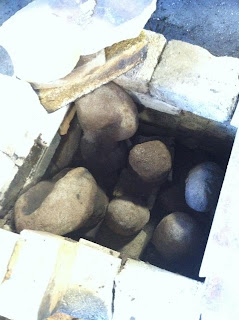Monument/Statue Research:
The main focus of my research for the 'Artifacts' portion of Environmental Foundry is on monuments and their meaning. I'm very interested in the different purposes for monuments and how their aesthetic correlates with their meaning. The first three monuments that I've created all have different purposes: worship, the representation of a historical event (ambiguous), and remembrance of the dead. The goal that I want to achieve with making these artifacts is to make them appear a lot larger than their actual size. To do this I will take photos of the finished artifacts, bring them into photoshop and appropriate people or wildlife near them to exaggerate size.
Sketches for the three statues:
 |
| North Korean 'eternal president' statues (historical/worship) |
- Here are multiple examples of different statues used for different purposes.
-Kim Jong-il bronze statue
-A tribute to Kim Jong-il, reportedly penned by the state-run Korean Central News Agency after his death, hailed the North Korean leader's "threadbare and discolored" parka as a "symbol of revolution".
- Looking at this photo of the famous Korean Leader, it makes me think about how people stand and act in front of certain statues. Typically for worship people face the front of the figure or front face of the statue. Also the placement of different statues can change the context completely.
 |
| Lao Tse Statue |
- "In Taoism, to embrace the totality while doing an everyday mundane task means you never leave the totality regardless of the action you might undertake. This is the principle of shou-yi, which is extremely difficult to do."
Example of photo manipulation: In a previous assignment I had fooled around with size alterations on photoshop and tried to push the limits of how believable I could make my hand sculptures.
 |
| Original photo of landscape at SAW |
 |
| Photo of cast iron hand |
 |
| Finished photo manipulation |
First layer of dung mixture
Final Layer with coarse grog
After the kiln has been set up, the molds are placed inside with gaps underneath to allow the wax to melt out the bottom. Charcoal is placed around the molds built up to the roof of the kiln then kiln shelves are placed on top to keep the heat trapped inside.
Kiln reaching max temperature without blower.
After the molds are heated up to the right temperature so that they are glowing red, they are ready to be poured.
Finished molds before cracking them out.









No comments:
Post a Comment